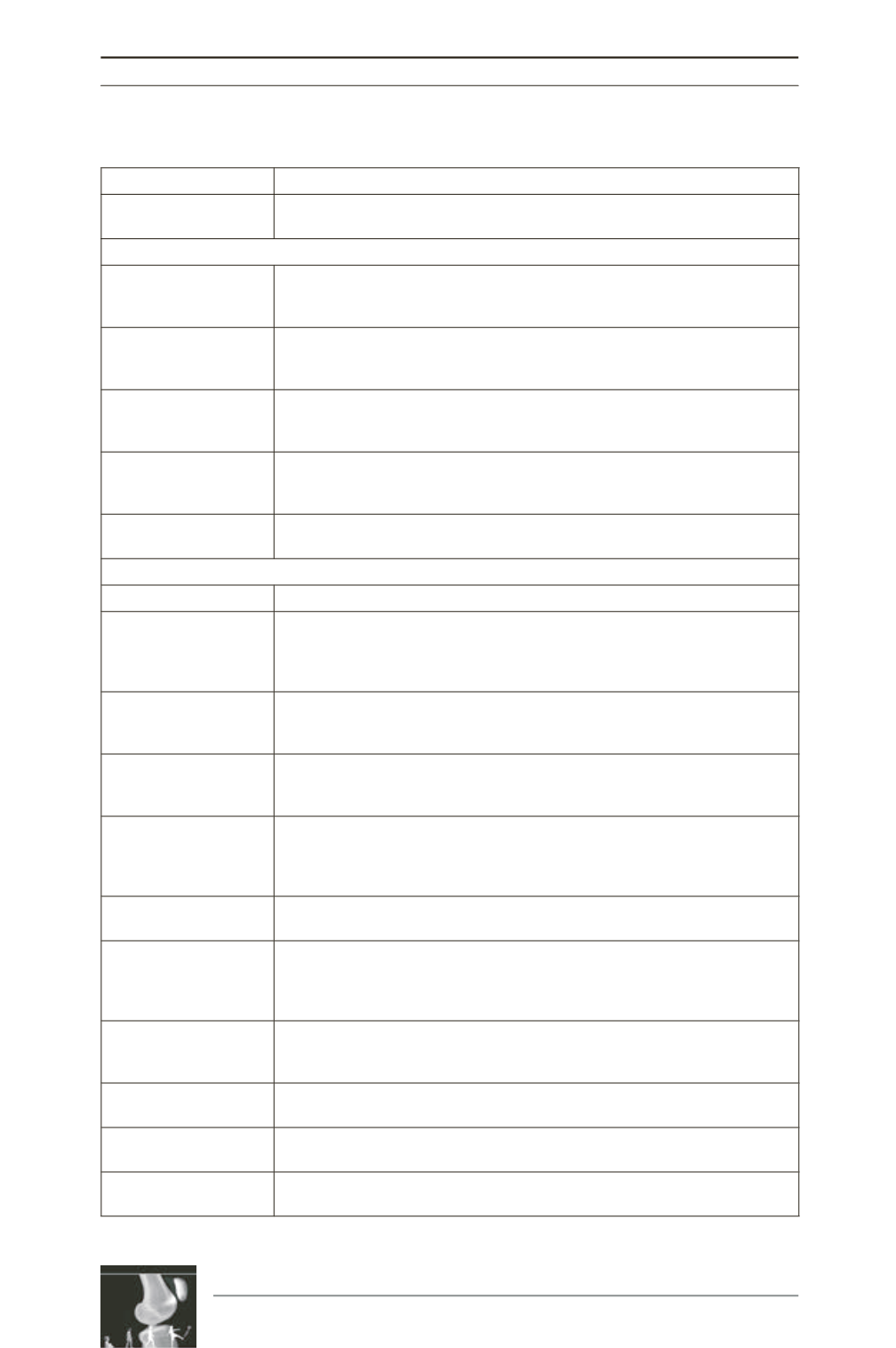

M. Charles, R. Afra, D.C. Fithian
404
Table 1
Measurement
Transepicondylar Width Length of a straight line parallel to the horizontal axis from the most medial to
most lateral aspect of the trochlea at the 2
nd
cut.
Patellar Angle
Angle of Fulkerson
Line 1 is drawn across the posterior margins of the medial and lateral condyles,
and line 2 is drawn along the lateral facet of the patella. The angle between
the two lines is PTF.
Angle of Grelsamer
Line 1 is drawn to be parallel to the horizontal axis. Line 2 is drawn through
the transverse the axis of the patella. The angle between the two lines is PTG.
A positive angle is designated as one that opens up to the medial
Angle of Laurin
Line 1 is drawn to be across the anterior margin of the medial and lateral
trochlea. Line 2 is drawn tangential to the slope of the lateral facet of the
patella. A positive angle is one that opens up to the laterally
Patellar Inclination
Angle
Line 1 is drawn across the posterior margins of the medial and lateral condyles,
and line 2 is drawn through the transverse the axis of the patella. A positive
angle is designated as one that opens up to the medially.
Lateral Patellar
Displacement
This is the shortest distance between the lateral margin of the trochlea and
the lateral margin of the patella facet.
Trochlear Morphology
Sulcus Angle
The angle between the slopes of the medial and lateral trochlea
Congruence Angle
Line 1 is drawn to bisect the sulcus angle of the trochlear groove. Line 2 is
drawn from the center of the trochlear groove to the patella apex. A positive
angle is designated as one that is towards the laterally. Also known as
Merchant Angle.
Trochlear Groove
Depth
Line 1 is drawn across the anterior margins of the medial and lateral condyles.
TGD is the distance from the center and deepest portion of the trochlear
groove to Line 1.
Roman Arch
Line 1 is drawn across the posterior margins of the medial and lateral condyles.
RA is the distance from the center of the posterior femoral condylar groove to
line 1.
Trochlear Groove
Thickness
Line 1 is drawn across the posterior margins of the medial and lateral condyles.
Two lines parallel to line 1 are drawn crossing the centers of the trochlear
groove and the posterior femoral condylar groove respectively. TGT is the
distance between these two lines.
% of Epicondylar
Width TGT
Is TGT distance expressed as a percentage of the transepicondylar width.
ETIT
Measures the distance of the lines drawn from the lateral and medial margins
of the trochlea along the trochlear surface to the center of the trochlear
groove. ETIT is the ratio of ET to IT. A ratio > 1.0 equates to having a lateral
facet larger than the medial facet.
Lateral Condylar Height Line 1 is drawn across the posterior margins of the medial and lateral condyles.
LCH is the distance from the most anterior margin of the lateral condyle to
Line 1 that is perpendicular to line 1.
% of Epicondyalr
Width LCH
LCH expressed as a percentage of the transepicondylar width.
Biedert Central
Condylar Height
Line 1 is drawn across the posterior margins of the medial and lateral condyles.
CCH is the distance from line 1 to the deepest part of the trochlear groove.
% of Epicondylar
Width CCH
CCH expressed as a percentage of the transepicondylar width.











